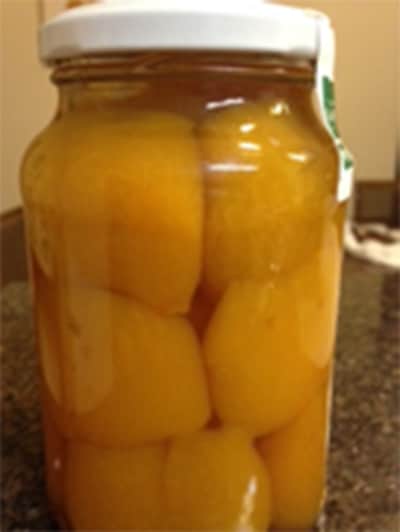
Loquat compote
Once the Portuguese brought in recipes using eggs, the Brazilians started to make sweets like pudim (pudding), quindim (made from egg yolks and coconut), and bom-bocado (shortcake made with cheese). 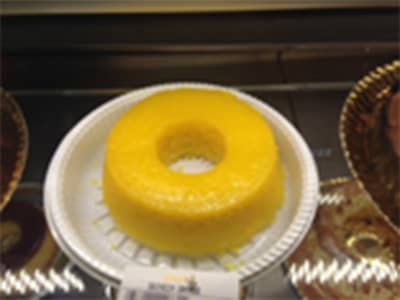
Quindim
Brazil is a huge country, so the sweets are somewhat different depending on the region, but some of the most common ones in São Paulo are brigadeiro (chocolate bonbons), beijinho (a coconut confection), paçoca de amendoin (a peanut confection), doce de abobora e côco (a pumpkin and coconut confection), and pamonha (a corn confection). 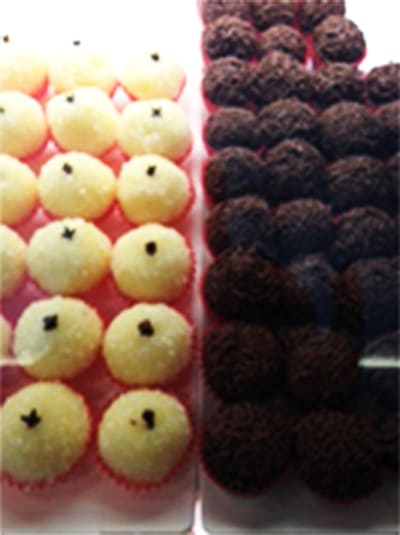
Beijinho (left) and brigadeiro (right)
You won’t see a birthday party or a wedding celebration without brigadeiro and beijinho. Brigadeiro are a sweet confection made by simmering condensed milk, chocolate powder, and butter together, rolling the mixture into bite-sized balls, and then covering the outside with chocolate spray. The inside is deliciously gooey, making them a huge hit with the kids. The recipe for beijinho is basically the same, except coconut is used instead of chocolate. The word beijinho means a tiny or gentle kiss. Can you imagine the sweetness now?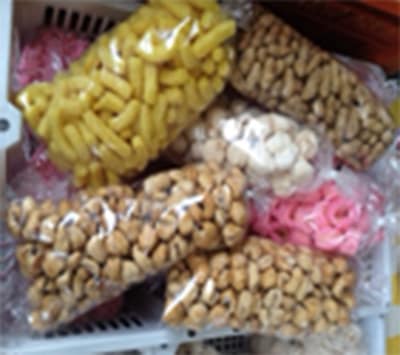
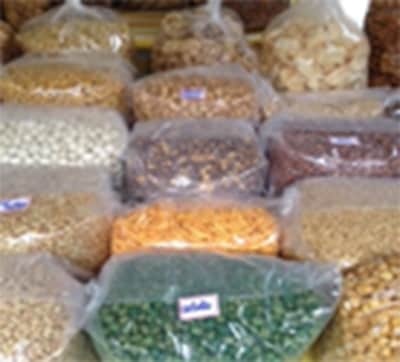
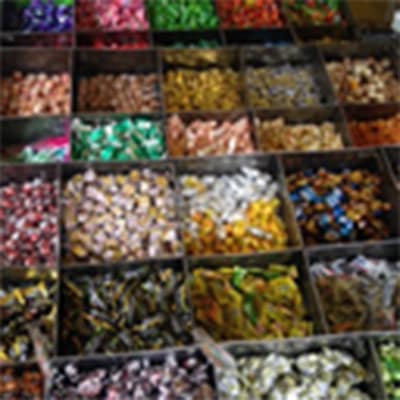
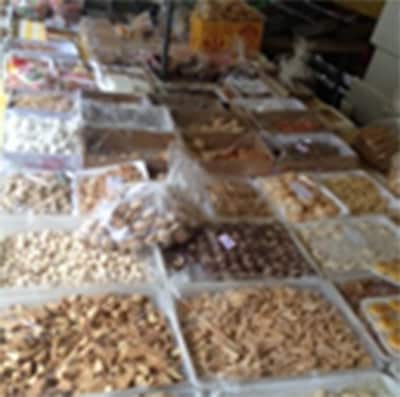
Sweets are generally sold at confectionary stores, supermarkets, or fancy cafés, but if you want to buy some really old-fashioned treats, your best bet is to go to one of the confectionary stands at the open-air market. Here, you can buy snack-like treats as well as cookies made with peanuts, coconut, almond, or guava. Below are some of the snacks I found with the most interesting names. 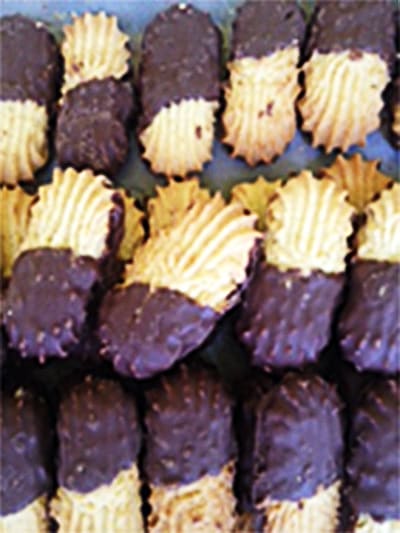
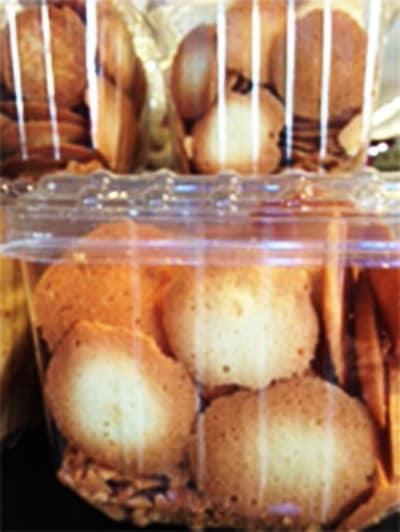

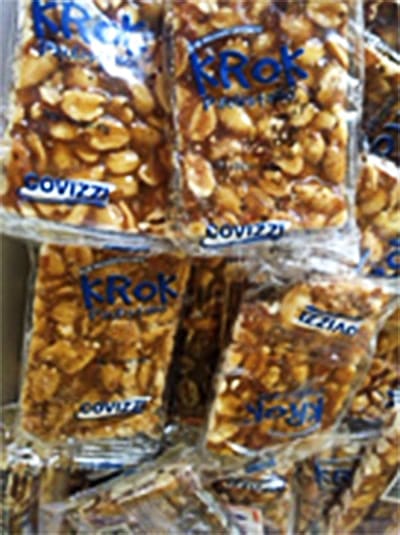

Unha de gato (cat claws)

Mentirinha (lies)

Olho de sogra (mother-in-law eyes)

Pé de Moleque (boys’ feet)
Do the names match the pictures? I don’t know how these sweets got their names, but they’re ones that every Brazilian knows. Why not give them a try yourself?
REPOTER

- Nami Minaki Sandra
- JobLanguage teacher,shadow box crafter
Born and raised in Brazil. After graduating from university, She has been teaching shadow box crafts that she learned while in Singapore where she resided for three years due to her husband’s work and she is also a language teacher. She is in love with the life here in São Paulo where cultures and traditions of various countries melt together.
What's New
-

- 2025.07.11
- Tallinn, Tech & Tranquility: A Nordic Escape with a Digital Twist
- Bishkek( Kyrgyz Republic )
-

- 2025.07.10
- Blog Liguria - (Almost) secret recipes
- Genoa( Italy )
-

- 2025.07.09
- City nights wrapped in light: Vivid Sydney 2025
- Sydney( Australia )
-

- 2025.07.08
- Country roads, take me home…
- London( UK )
-

- 2025.07.07
- AI as gods
- Santo_isidoro( Portugal )
-

- 2025.06.30
- E-scooters
- Sao paulo( Brazil )
REPORTER
-

- Daniiar Bakchiev
- BishkekKyrgyz Republic
-

- Patrizia Margherita
- GenoaItaly
-

- Hiroko Fujita
- SydneyAustralia
-

- GianFranco Belloli
- LondonUK
-

- Megumi Ota
- Santo_isidoroPortugal
-

- Nami Minaki Sandra
- Sao pauloBrazil
-

- Yuriko Mikami
- MilanItaly
-

- Susumu Yamada
- MadridSpain
-

- Shoko Yamamoto
- ParacasPeru
-

- Patrick Sacco
- Austin, TexasU.S.A
-

- Alberto Ferrando
- SydneyAustralia
-

- Chieko Suganuma (maiden name : Nagura)
- Gold CoastAustralia
-

- Patrizia Margherita
- PortlandU.S.A
-

- Chuleeporn Suksabye
- Chiang MaiThailand
-

- Padra Rivodo Hiromi
- MonterreyMexico
-

- Erika Anderson
- CarmelU.S.A
-

- Keiko Miki
- DublinIreland
-

- Knowledge Capital Staff
- Japan-townJapan
-

- Rim
- DusseldorfGermany
-

- Claudia Diaz
- New YorkU.S.A
-

- Zia Fariya
- BangaloreIndia
-

- Mara Groner
- BerlinGermany
-

- Lisanne Kleinjan
- RotterdamNetherlands
-

- Christine Pilcavage
- MassachusettsU.S.A
-

- Martha Hickey
- MichiganU.S.A
-

- Mirai Tsuda
- FirenzeItaly
-

- Kazuya Yamaoka
- MontereyU.S.A
-

- Takae Nagamiya
- Los AngelesU.S.A
-

- Kazuhito Habu
- BerlinGermany
-

- Sanja Bogetic
- BelgradeSerbia
-

- Sarena Ehrlich
- FontainebleauFrance
-

- Yves Lalune
- DijionFrance
-

- Martha Hickey
- AmsterdamNetherlands
-

- Hiroshi Yamauchi
- VilniusLithuania
-

- Ritsuko Derickson
- WashingtonD.C.U.S.A
-

- Rei Watanabe
- BerlinGermany
-

- Tatsuji Seki
- BangkokThailand
-

- Rubin Cynthia Beth
- New HavenU.S.A
-

- Miho Bokuda
- FirenzeItaly
-

- Pat Lee
- Hong kongChina
-

- Weikalossu Lin
- TaichungTaiwan
-

- Emiko Ogawa
- LinzAustria
-

- Hironari Masuda
- ShanhaiChina
What's New
-

- 2025.07.11
- Tallinn, Tech & Tranquility: A Nordic Escape with a Digital Twist
- Bishkek( Kyrgyz Republic )
-

- 2025.07.10
- Blog Liguria - (Almost) secret recipes
- Genoa( Italy )
-

- 2025.07.09
- City nights wrapped in light: Vivid Sydney 2025
- Sydney( Australia )
-

- 2025.07.08
- Country roads, take me home…
- London( UK )
-

- 2025.07.07
- AI as gods
- Santo_isidoro( Portugal )
-

- 2025.06.30
- E-scooters
- Sao paulo( Brazil )












